The 12th Foreign Infantry Regiment (12e REI) was a provisional unit of the Foreign Legion organized to defend mainland France against Germany during the first stage of the Second World War. The 12e REI was formed in southeastern France in late February 1940. It was made up of legionnaires from North Africa, reservists who had served in the Legion and, above all, foreign volunteers enlisted for the war period. In May and June 1940, during the Battle of France, the regiment participated in heavy fighting with German troops and lost 90% of its men. The 12e REI was disbanded at the end of June 1940.
La version française de cet article: 12e Régiment Étranger d’Infanterie
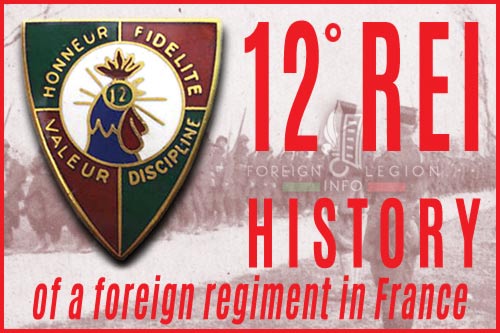
Introduction: France in early 1940
In early September 1939, a military operation was launched by German troops to invade Poland. On September 3, this invasion provoked the declaration of war on Germany by France and the United Kingdom. Mobilization in France begins. This country is known for a long tradition of foreign volunteers wanting to fight for France. That’s why in late 1939 and early 1940, the first military units were formed to employ these volunteers. For their administration, the new formations of the French army are assigned to the Foreign Legion.
The main Foreign Legion depot in France is established at the Sathonay Camp, an old military camp located north of Lyon. The depot had to recruit, train, equip and administer future soldiers to serve in the provisional regiments of the Legion. Two of those regiments are organized 12 miles (20 km) east of the Sathonay Camp, at the camp of La Valbonne. The first provisional regiment, 11e REI, was created there in late 1939. A few weeks later, in late February 1940, a second provisional regiment will be created to defend France.
Creation of the 12th Foreign Infantry Regiment
The 12th Foreign Infantry Regiment (12e REI) was activated on February 25, 1940 at the camp of La Valbonne, northeast of Lyon. Lieutenant colonel Jean Besson took command of the regiment. He is a reservist, a veteran of World War I and a former officer of France’s Army of Africa who has never served in the Legion. But he got to know the legionnaires well during his service in North Africa, before retiring in 1937.
The 12th Foreign Regiment is a provisional unit of the Legion, organized in time of war (therefore, its number is 10 + 2). It is formed by reservists having already served in the Legion, foreigners being mobilized in France in late 1939 and by E.V.D.G. (Enlisted Volunteers for the Duration of the War) coming from foreign countries. The Republican Spaniards dominate (they are about 900, i.e. 30%), there are many Polish and German Jews who have fled to France (around 600 men), but also many Italians or Poles. To supervise these men, some 400 legionnaires on active duty came to France from Foreign Legion regiments stationed in North Africa to complete the 12e REI.
Part of the officers arrive from the Legion’s or French regiments stationed in Africa. Besides, the unit is joined by a large number of reserve officers and officers who have never served in the Legion or even in Africa.

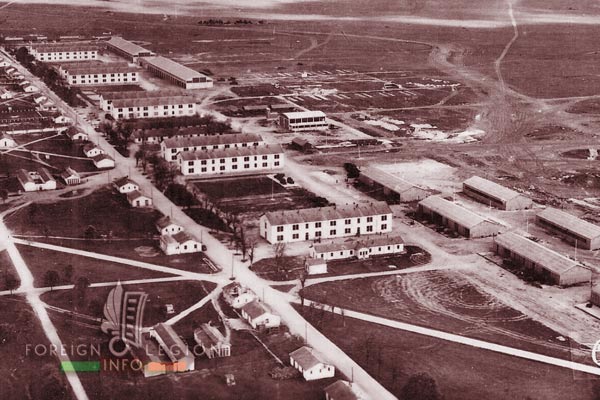
Organisation and training
At the camp of La Valbonne, the companies and later the regiment battalions are formed. Each battalion is composed of three light infantry companies and a support company. The 12e REI units are being constituted in the villages around the camp.
The first basic instruction began. It is intended for E.V.D.G., supervised by legionnaires, for their next assignment to companies. The training material at the camp is simple and insufficient in number. It includes a few models of weapons: Berthier Mle 1907-15 rifles (and even the old Lebel Mle 1886-M93 rifles), FM 24/29 machine guns, some Hotchkiss Mle 1914 machine guns, a Brandt 60 mm mortar + one of 81mm, and a 25mm APX SAL light anti-tank gun (Mle 1935 or 1937).
The regiment started to receive equipment. Nevertheless, like the 11e REI, even the 12e REI received only an insufficient part of its equipment and gear. The French command probably decided that the legionnaires, being elite soldiers, do not need too much of the material necessary for the hard fights against an enemy of a modern, mechanized army. Concerning the weapons, the 11th and 12th Foreign Regiments were equipped with Lebel 1886-M35 carbines, Berthier Mle 92 carbines or Berthier 1907-15 M16 rifles. The latter were widely used by the French Army in 1940; the new MAS 36 rifle was not yet available in large numbers.
The organization and training at the camp of La Valbonne lasted until May 1940. It was the time of the Phoney War (September 2, 1939 – May 10, 1940), a period at the start of the Second World War, during which the French strategy was strictly defensive, relying on the Maginot line (a line of fortifications) in eastern France. It ended definitively in May 1940, when the German forces launched a vast offensive in the West. The 12e REI was alerted.
Composition of the 12e REI in May 1940
- Commander : Lieutenant Colonel Besson
- Military staff/HQ : Major Dury
- HQ Company : Captain Breuillard
- Service Company : Captain Tizon
- Engine Company : Captain Gavoille
- 1st Battalion : Major Roux
- 2nd Battalion : Major Franquet
- 3rd Battalion : Major André
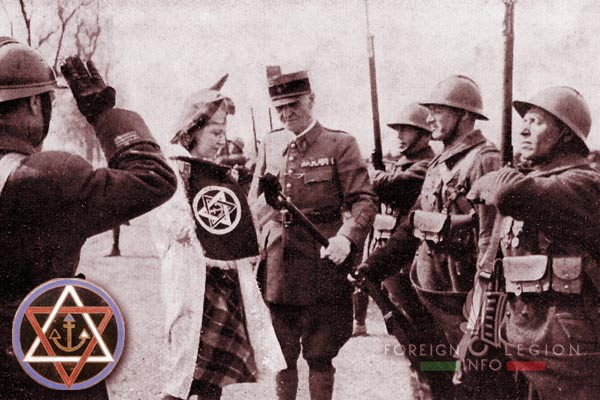
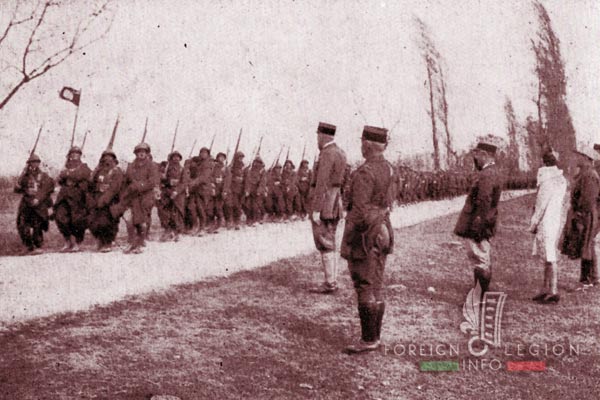
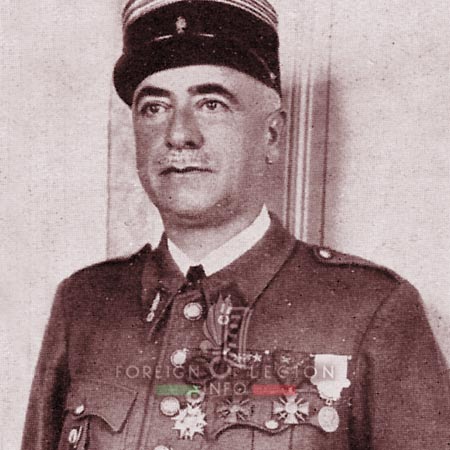
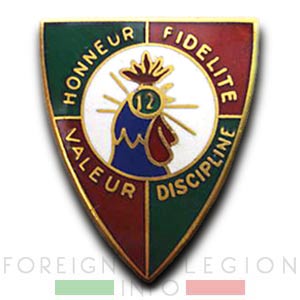
Battle of Aisne
On May 10, 1940, the German armies launched the Fall Gelb. It was a huge offensive on Luxembourg, Belgium, the Netherlands, then across the Belgian Ardennes in order to attack the French front on the Meuse River, near Sedan (northeastern France), from May 12. The Phoney War is over. The Battle of France begins.
The 12e REI left on the camp on May 11, 1940. At that time, the regiment was composed of 84 officers, 321 non-commissioned officers and 2,685 troops (3,090 men in total). They arrived at the Meuse and were assigned to the 8th Infantry Division (8e DI) of General André Dody. The recently recreated division is held in reserve until May 17 in the Bar-le-Duc sector.
Meanwhile, German armored units managed to cross the French border in the north and entered the department of Aisne on May 15. The Battle of the Aisne begins on May 17.
So, the same day, the battalions of the 12e REI moved in the west, in the sector of Château-Thierry, before taking positions around Soissons on May 25. It is one of the most ancient towns of France, located some 60 miles (100 km) northeast of Paris, in a meander of the Aisne River. At the time, the town was freshly abandoned by its inhabitants.
Spread over 6 miles (9 km) of the front, the legionnaires organized the defense of the seven bridges at Soissons. They also took responsibility for the bridge and a large petrol depot in Venizel, a village east of the town. Their mission is to prohibit access to the enemy who would like to cross the river between Venizel in the east and the Pommiers bridge in the west.
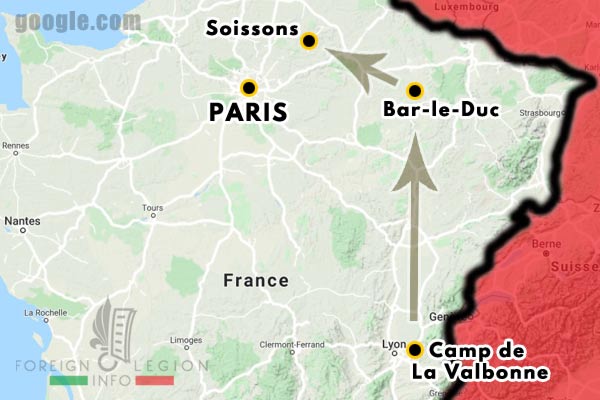
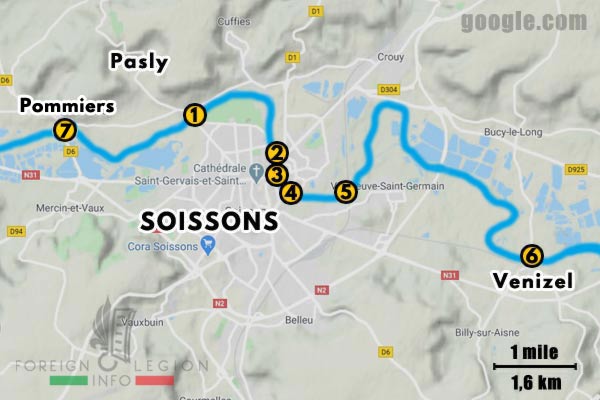
Battle of Ailette
On May 29, the 3rd Battalion of Major André moved 10 miles (15 km) northeast, towards Vailly-sur-Aisne, to remain there for a week. On June 4, the battalion was placed at the disposal of the 28e DIA (Alpine Infantry Division) of General Lestien, which was placed further north-east of Soissons. The battalion must reinforce it because of the German Army Corps of Generals von Speck (18. AK) and Kuntze (42. AK) who are rapidly approaching the positions of the alpine division.
Under an intense bombardment by enemy aviation and artillery during its movement on June 5, the 3rd Battalion arrive in the evening on the Chemin des Dames. It is a famous road that was the scene of several deadly battles of the First World War. Placed in the La Malmaison sector, at the west end of the road, the battalion was given the task to counter-attack the enemy.
On June 6, at 3.30 a.m., the counter-attack was launched by the battalion, preceded by a Renault R35 tank company. The hard fighting took ten hours. The men of the 12e REI fought bravely. However, they lacked some important elements of equipment and, moreover, they were provided with no air support. Their counter-attack caused a severe German reaction with artillery and aerial bombardment, followed by an infantry and armored offensive of the 42. AK, especially its 50. ID (Infantry Division) of General Sorsche. Despite the enemy’s numerical superiority, the brave legionnaires were fighting until they run out of ammunition. The 3rd Battalion of the 12e REI would be sacrificed.
Two days later, on June 8, it was Lieutenant Ducret and a few dozen combat-ready legionnaires who presented themselves in Soissons as the only survivors of the 3rd Battalion, out of their original strength of around eight hundred men.
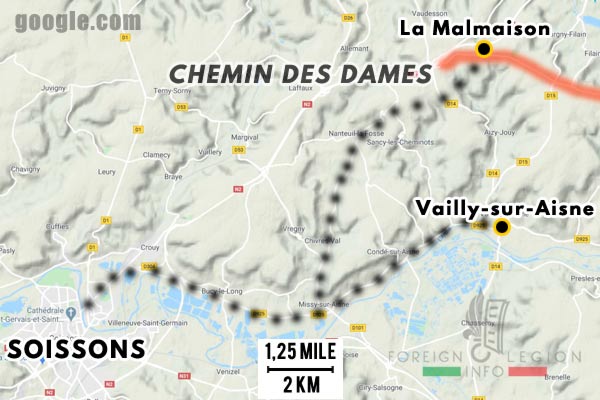
Bataille de Soissons
The 12e REI, less a battalion lost on the Chemin des Dames, is still installed around Soissons, along the Aisne River, to defend the town together with the other units of their 8th Division. Two German infantry divisions of the 18. AK are approaching their positions: the 290. ID of General Dennerlein to the west of the town and the 25. ID of General Clößner to the east.
On the evening of June 6, the 25. ID managed to cross the Aisne, near Missy-sur-Aisne, a village 6 miles (9 km) upstream from Soissons.
On the night of June 6-7, non-Legion divisional combat engineers blew up the bridges of Pommiers, Pasly, Soissons and Venizel. Unfortunately, some of the destructions are insufficient, and the enemy infantry (290. ID) is able to cross over. Supported by artillery, the Germans would try to cross the river in several places.
The 12e REI went into action. The regiment must hold its positions without a retreat to prevent any advance from the opponent. The fighting was tough, and enemy aircraft fire decimated the units. The men of the 1st Battalion fight in the northwest, at Pasly, and east of the town, at Venizel. Those of the 2nd Battalion hold positions mainly to the east of the town, near Villeneuve-Saint-Germain. The defenders, constantly shelled and machine-gunned, demonstrated unruffled bravery.
Meanwhile, the Venizel reservoir containing 5,000 tonnes of petrol/gasoline was destroyed by the 3rd Company of Captain Thomas. The officer was injured later in the battle, but refused to be replaced and continued in fighting.
On June 7, the heroic defense took all day. The strongpoints resisted fiercely. Nevertheless, in the evening, significant infiltrations occurred in the neighboring sub-sectors of the 12e Etranger. To the west, units from the 290. ID managed to cross the Aisne. In the east, around Venizel, the legionnaires are attacked by elements of the 25. ID.
Three-quarters surrounded and almost without ammunition, the 12e REI was eventually ordered to retire further south. But communication in the areas infiltrated by the enemy is considerably cut off. That’s why some elements of the regiment, such as the 2nd Company of Captain Boudet, did not withdraw and would be sacrificed there. Soissons would be seized by the 290. ID on June 8.

Retreat to the Seine
The 3rd, 6th and 7th Companies cover the retreat of the heavy engine elements of the regiment. On the other hand, the regiment’s car and horse supply columns were pointed by enemy aircraft and were bombed. The infantry would suffer little. But 130 horses are killed; 13 mobile kitchens and almost all the carts of the 12e REI are also lost.
The regiment, which has already lost more than half of its strength, is regrouped during the night of June 8-9. The legionnaires would become the rear guard of the recently formed 6th Army of General Touchon, a formation to rally all remaining French divisions that fought on the Aisne. Immediately, the 6th Army (including the regiment’s 8e DI) is directed 15 miles (25 km) south, towards Neuilly-Saint-Front, a town located in the south of the department of Aisne, near the Ourcq River.
Like the Aisne, even this river offers, with its valley, a natural barrier, and thus a new defense position for the 12e REI. The legionnaires remain on the site for two days, during June 9 and 10. They repulsed two German attacks and took prisoners.
Afterwards, it is a new withdrawal to the south, this time towards Nanteuil-sur-Marne, on the Marne River. There, the regiment has to resist for three days, until June 13. He effectively protected the withdrawal of the elements of the 6th Army, despite the extreme enemy fire of all calibers and many attempts to be surrounded.
But the enemy offensive pushes the 6th Army, with the 12e REI in the rear, another 45 miles (70 km) further south, towards Montereau-Fault-Yonne, a town located at the confluence of the Seine River and the Yonne River. The regiment’s units take positions east of the town, between the Seine to the north and the Yonne to the south. Placed around the towns of Balloy and Bazoches-lès-Bray, with the commander’s HQ in Vinneuf, the legionnaires repulsed many Wehrmacht attacks during the next two days, June 14-15.
On June 15, the situation on the battlefield is critical. The day before, German troops were already marching down the streets in Paris. So, around noon, Lt Colonel Besson passed to his remaining men the order of the 6th Army of a new withdrawal. The units of the 12e REI have to cross the Yonne south of the HQ, across the Champigny bridge.
But a misfortune happened. When the legionnaires, constantly machine-gunned by the Germans, were crossing the river across the Champigny bridge, the latter collapsed. A large part of the regiment (about the size of a battalion, with their commander and three captains) remains blocked north of the Yonne, with the Germans. They tried yet to resist for several hours, but they are captured eventually.
By coincidence, the same day not far from here, in the neighboring village on the left, General Hermann von Speck of the 18. AK became the first German general killed during the Second World War. He died when passing across a bridge (in Pont-sur-Yonne) which was blown up by the French at the moment. General von Speck participated with his army corps in the battle near the Chemin des Dames between June 5 and 7, where the 3rd Battalion, 12e REI was annihilated.

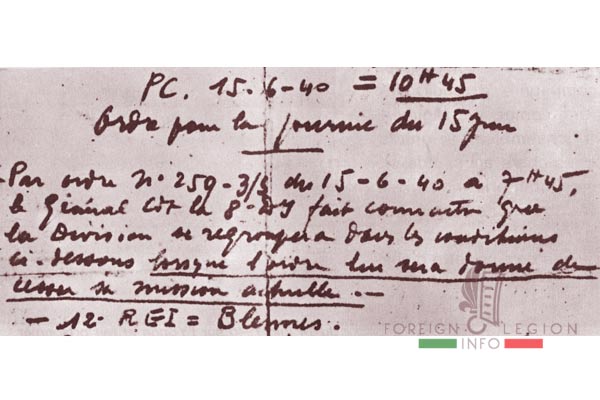
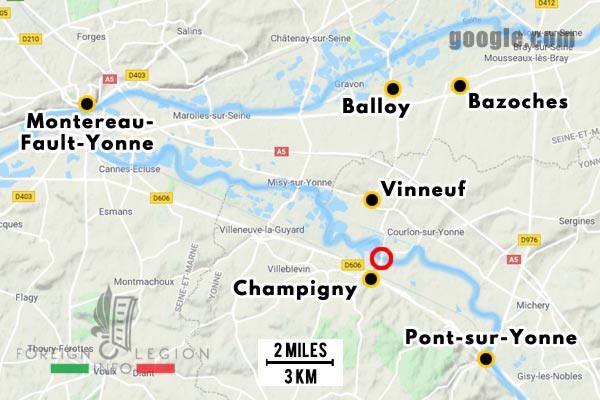
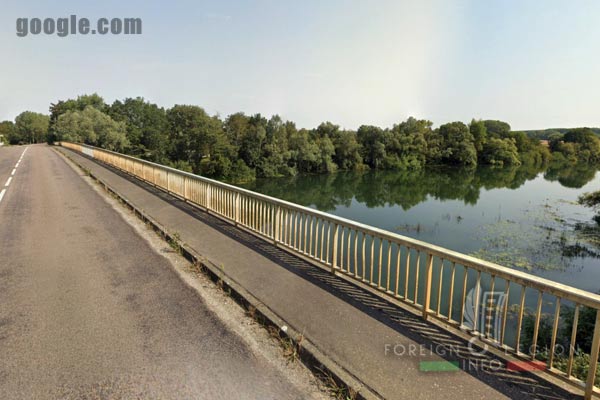
Retreat to the south-west and the Armistice
On June 16, the rest of the 12th Foreign Regiment is regrouped in Montargis, 30 miles (50 km) southwest of Champigny. The regiment comprises now only around 180 combat-ready men coming from the two decimated battalions. They will be reinforced with legionnaires from the Service Company, as well as from the regimental supply train, and with isolated elements having lost contact with their original units of the already significantly ruined 6th Army.
Surrounded and pressed by enemy armored vehicles, this small group moved to the south-west to execute a retreat covering about 155 miles (250 km), lasting from June 16 to 22. The men were going by foot or by truck through Gien, Bonny-sur-Loire, Brinay and Châteauroux. The retreat was a nightmare because of the roads jammed by a large exodus of civilians and other French troops from advancing Germans. Having suffered further losses, the men finally arrived in Bessines-sur-Gartempe, a small village north of Limoges, in the Gartempe valley. It is at this site that the few survivors of the 12e REI learned about the Armistice of June 22 being signed between the Third Reich and France.
The Battle of France was over. The regiment ceases to exist. Metropolitan France is divided by a line of demarcation into two zones: the zone occupied by the Germans and the zone known as “free”.
After the Armistice
The two to three hundred exhausted survivors of the 12e REI remain in Bessines-sur-Gartempe for three days. On June 25, they are transported 75 miles (120 km) northeast to be stationed in Saint-Amand-Montrond. In this small town, built in the basin of the Cher River, the legionnaires will be camped until August.
On June 30, the 12th Foreign Infantry Regiment is mentioned in dispatches by General Dody (commander of the 8e DI), in the Order of the Division, because of demonstrating everywhere “the example of Discipline and Valor” and because the regiment “has never surrendered, adding a heroic page to the Book of Glory of the immortal Foreign Legion.”
In August 1940, after a long journey of 190 miles (300 km) to the south, to Caussade (a town north of Toulouse), the survivors of the 12e REI boarded a train (40 men + 5 horses per car) to reach Marseille in southeastern France.
They are dispersed within this region among the camps of Trets, Aubagne (the Mother House of the Legion of today) and Fuveau. In Fuveau, the men of the 12e REI joined their fellow colleagues of the former Depot of the Legion of Sathonay and the inactivated 11e REI, who had been installed in this town since July.
A few days later, the legionnaires on active duty are sent to Algeria to join Sidi Bel Abbès, the Mother House of the Legion at the time. The Foreign Legion Depot in Fuveau is finally disbanded on August 22, 1940. Only mobilized foreigners and foreign volunteers for the duration of the war from the two provisional regiments + the Sathonay Depot remained. They are distributed among units of workers (Foreign Worker Group, GTE); most of these men were demobilized in early 1941.

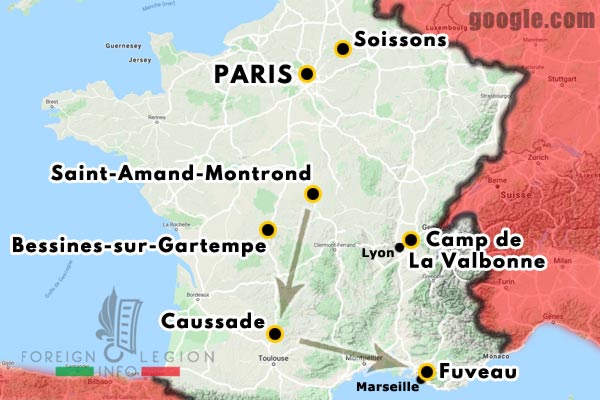
Conclusion
During the 1940 Battle of France, the legionnaires, reservists and foreign volunteers of the 12th Foreign Infantry Regiment faced an enemy superior in numbers, supported with heavy artillery, modern armored vehicles and aircraft. Although members of a freshly formed regiment and despite their insufficient equipment and limited ammunition, the men of the 12e REI eventually proved the same courage as old warriors.
Decimated on the Chemin des Dames, on the Aisne, on the Ourcq, on the Marne, on the Seine, on the Yonne, on the Loire, on the Cher, on the Creuse or on the Gartempe, they were never afraid of their enemy. Nine out of ten men from the 12e Etranger were lost during the Battle of France; they were killed, wounded, captured or missing.
In the 2000s, a war memorial dedicated to the 11e and 12e REI was built by the Legion south of Trets, near the Route de la Légion (Legion Road, a road of a few hundred meters, built by legionnaires camped in Fuveau in July-August 1940). Each year, in early November, a ceremony takes place there to pay homage to the men of the two Foreign Legion regiments who fought bravely in France in 1940.
Officers of the 12e REI being killed in 1940
Captain Pierre Ruillier
– commander of the 9th Company, 12e REI
– killed on 6 June 1940 in Soissons
Lieutenant Raoul Dugau
– commander of a Support Company, 12e REI
– killed on 14 June 1940 at Bazoches-lès-Bray
Lieutenant Pierre Genet
– an officer of the 12e REI
– killed on 10 June 1940 near the Ourcq
Lieutenant Jacques Merlet
– platoon leader with the 5th Company, 12e REI
– killed on 8 June 1940 at Villeneuve-Saint-Germain
Second Lieutenant Alma Wildt
– an officer of Italian origin of the 3rd Battalion, 12e REI
– killed on 6 June 1940 on the Chemin des Dames
Aspirant (officer candidate) Arthur Dallin
– an officer of the 3rd Battalion, 12e REI
– seriously injured on 6 June 1940 on the Chemin des Dames
– he died on 12 June 1940
Aspirant Charles Garnier
– an officer of the 12e REI
– killed on 7 June 1940 at Pasly
Aspirant Léon Gigarel
– an officer of the 3rd Battalion, 12e REI
– killed on 6 June 1940 near the Chemin des Dames

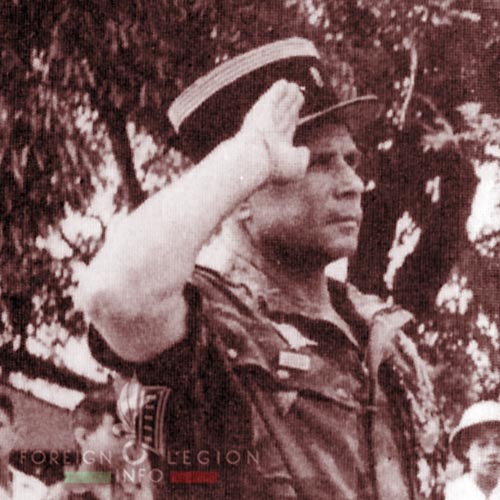
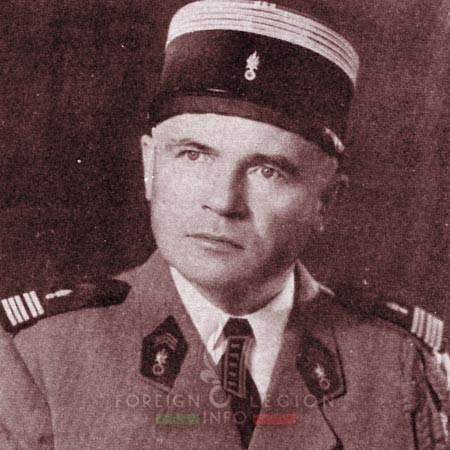
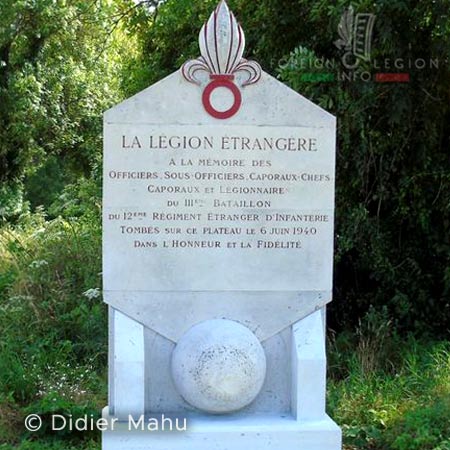
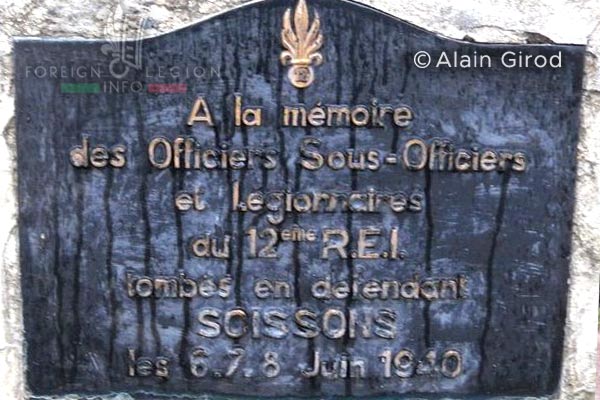

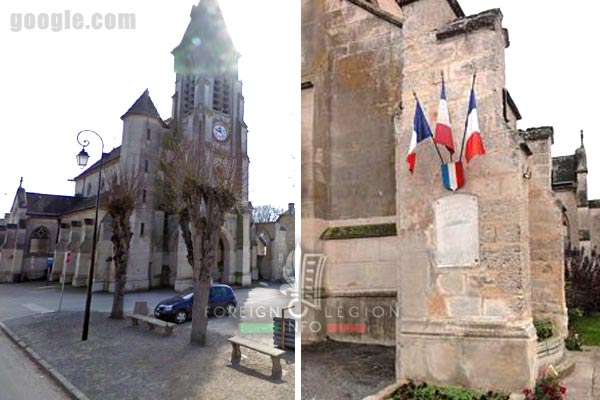
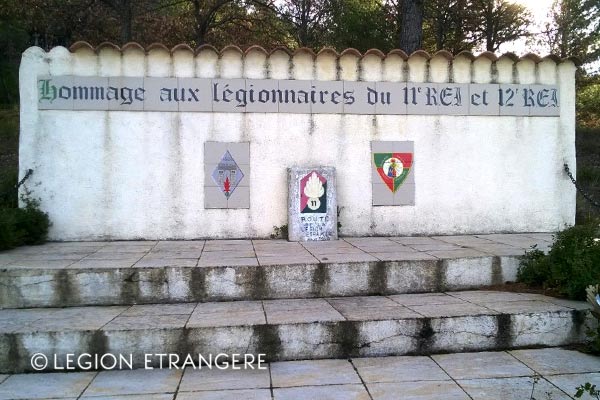
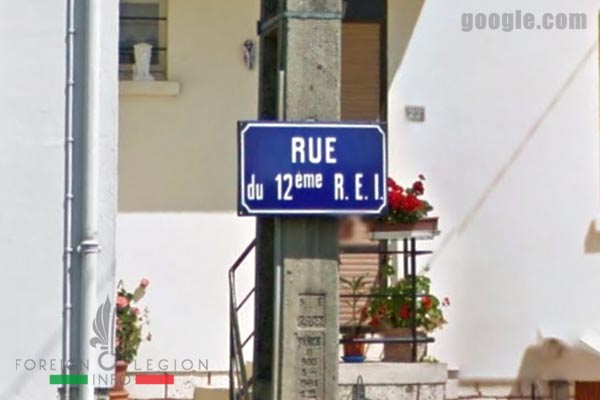
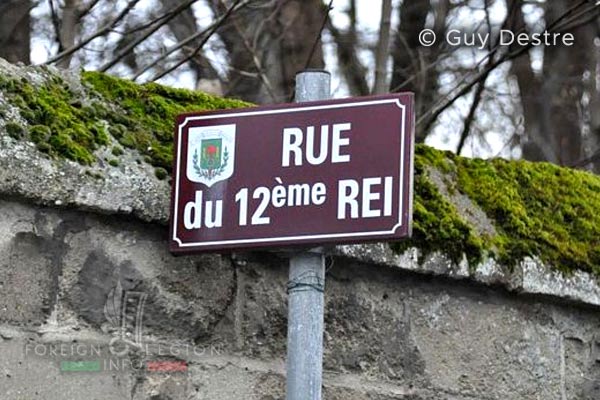
———
Main information & images sources:
Képi blanc magazines
Légion Etrangère magazines
Robert Forczyk: Case Red: The Collapse of France (Osprey Publishing, 2017)
Douglas Porch: The French Foreign Legion: A Complete History (Skyhorse Publishing, 2010)
Pierre Montagnon: Histoire de la Légion (Éditions Pygmalion, 1999)
Armée de Terre Française 1940 (Fr)
Seconde Guerre (Fr)
Collections d’Insignes et Souvenirs Militaires (Fr)
11e et 12e REI, 13e DBLE, 1939-1940 (Fr)
Fanion Vert et Rouge (Fr)
Mémorial Gen Web (Fr)
Mémoires des hommes (Fr)
Google Maps
Wikipedia.org
———

You can support this website at any time through our store. Thank you.
EU-based readers can visit our EU-based shop, to avoid import charges.
—
See other Foreign Legion’s former regiments:
1st Foreign Parachute Regiment
2nd Foreign Cavalry Regiment
3rd Foreign Parachute Regiment
4th Foreign Infantry Regiment
5th Foreign Regiment
6th Foreign Infantry Regiment
—
The page was updated on: February 27, 2020
